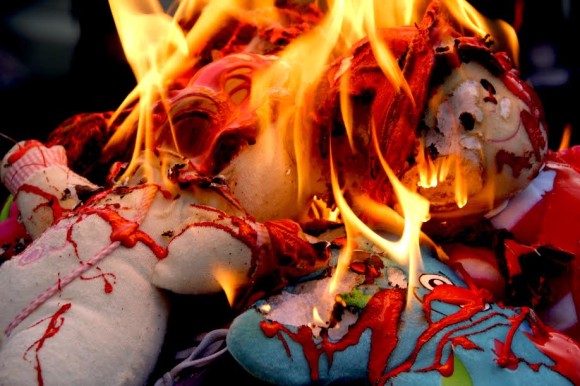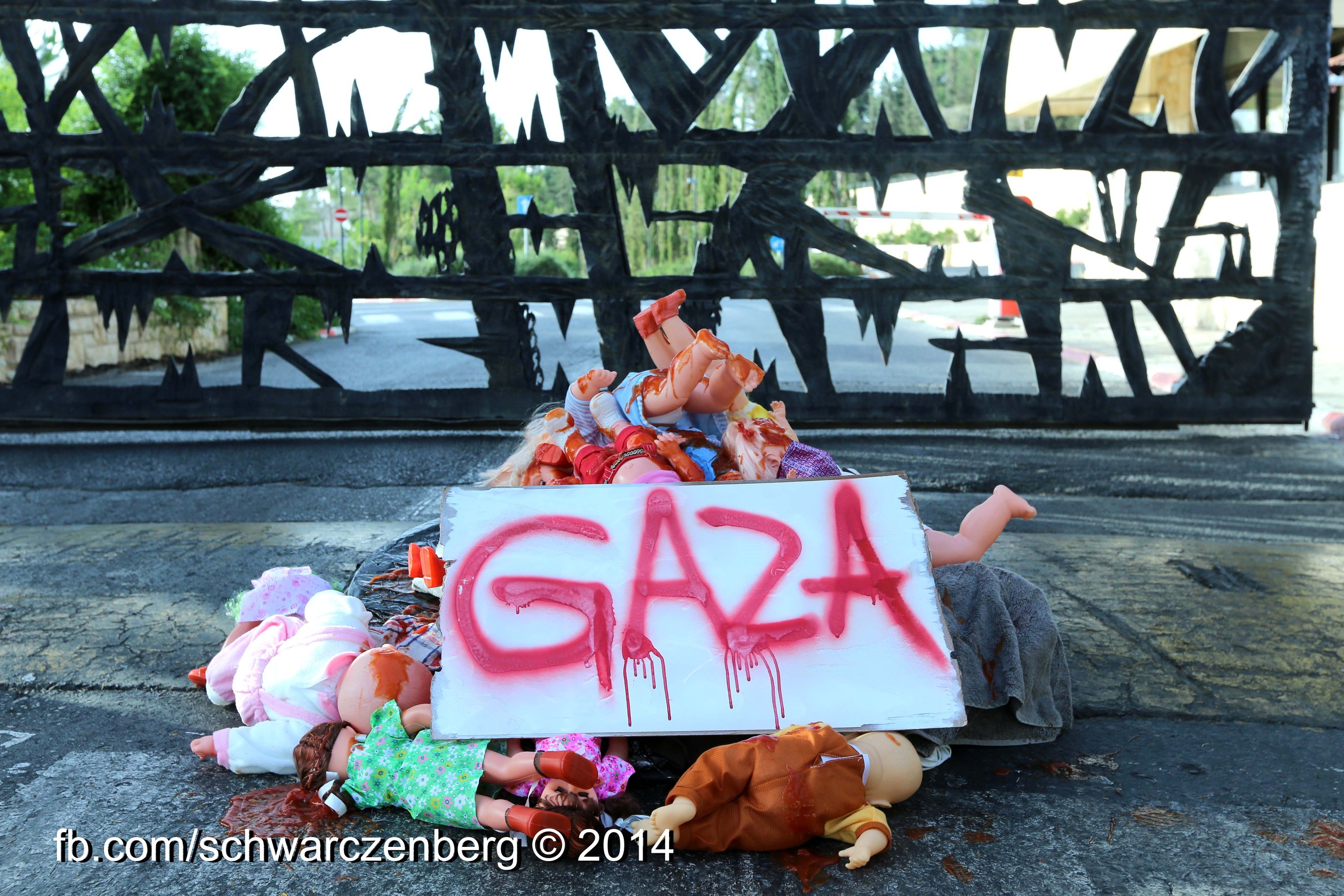Category: In the Media
-
‘Jews Against Genocide’ hold memorials for killed Palestinian children in front of Israeli govt buildings around the world
19th July 2014 | Jews Against Genocide, posted here | Occupied Palestine Jews Against Genocide (JAG) held a memorial service in front of the Knesset for Palestinian children killed by Israel in its current attack on Gaza. A pile of bloody dolls was placed at the Israeli Parliament and at other locations around the world. In…
-
Jews Against Genocide hold memorial for Palestinian children at Yad Vashem
13th July 2014 | Jews Against Genocide | Occupied Palestine Yesterday, Saturday, 12th July, Jews Against Genocide (JAG) held a memorial service for Palestinian children killed by Israel in its current attack on Gaza. JAG set aflame to a pile of dolls covered in red paint at Yad Vashem, Israel’s holocaust memorial museum. JAG is a movement of Jews…
-
Israeli forces engaged in punitive destruction of homes in the Gaza Strip
10th July 2014 | Palestinian Center for Human Rights | Occupied Palestine The Palestinian Centre for Human Rights (PCHR) is strongly concerned by Israel’s conduct of its offensive on the Gaza Strip, and in particular by the widespread punitive targeting of homes belonging to members of Hamas and Islamic Jihad. In recent days, the Israeli air force has…



